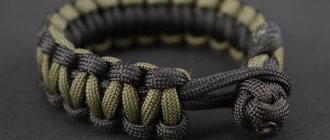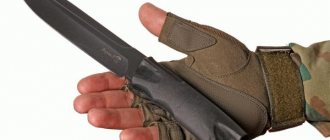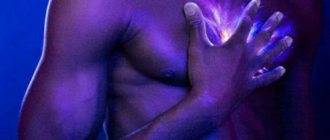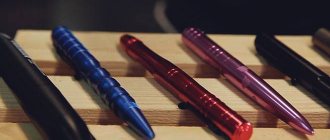Initially, the arafatka was used exclusively in Eastern countries, but recently it has been widely worn throughout the world. Other names for arafatka - shemagh or keffiyeh - may be better known, although in essence they simply serve as the name of the scarf. This oriental accessory has become popular due to its versatility. It can be a headdress, a mask, a tablecloth, or even a bandage.
Much depends on the way this accessory is worn. Today's article will look at how to tie an arafat in various ways so that it looks stylish and is comfortable.
Master class on how to tie an arafatka
There are quite a lot of ways to tie an arafatka correctly. Typically, this cotton scarf is worn either on the head or around the neck. The first method is more popular in eastern countries, while Europeans and Americans prefer to wear a shemagh around the neck as a stylish replacement for a scarf (Figure 1).
Figure 1. Arafatka - a traditional headdress in Arab countries
Because a high-quality arafatka is usually made of cotton and wool. Most often it is white, but, depending on the region of manufacture, the product may have a black, red or blue ornament.
Arafatka, shemagh, keffiyeh - what is it?
If the “Arafat woman” evokes in you associations with the Arab leader Yasser Arafat, then you are on the right track in understanding the origins of this trendy item. It was Yasser Arafat who attracted the attention of Europeans to Arab national clothing, which is preferred by residents of desert and hot areas. When using a shemagh in its traditional solution, it is important not only how to tie the arafat on the head, but also the color and pattern of the product.
However, European fashionistas, who so liked the stylish option of protecting the head, face and neck from wind, sun and frost, do not focus on the ornament, and if they choose scarves in a certain range, they focus exclusively on the overall color of the finished ensemble. They are more interested in how to achieve an interesting external effect when using the keffiyeh in a fashionable look.
But in the East they don’t really struggle with the question of how to tie an arafatka correctly - they simply throw it over the head and secure it with a hoop. All diagrams, videos, pictures and solutions are already design delights and style experiments of fashion houses.
If we talk about styles, then shemagh is a very universal solution. It’s worth understanding the question of how to tie an arafat shirt correctly if your style preferences are:
- casual;
- ethnic;
- sports;
- urban;
- military;
- youth.
The last point applies to different subcultures, which themselves figure out how to tie an arafat around the neck or on the head. The issue of colors and decors is also resolved independently. In youth trends, homemade, brightly decorated, colorful solutions are not uncommon.
Description and purpose of arafatka
In its homeland, in eastern countries, shemagh is used not only as a headdress, although it was originally created specifically for protection from the scorching sun and dust (Figure 2).
The arafatka is a universal and multifunctional thing that can help out its owner in any situation, and not only men, but also women wear the keffiyeh.
The history of the name of this headdress is also interesting. The keffiyeh or shemagh is considered traditional, while the arafatka began to be called after the war in Palestine, since this headdress was a kind of calling card of the Palestinian leader Yasser Arafat. Also in the CIS countries it is customary to call this accessory a Palestinian.
The keffiyeh was originally invented by the Bedouins. This lightweight piece of fabric reliably protected the head, face and neck from the heat. Men's and women's shemaghs are usually made of cotton, as this material is best suited for hot climates. But, unless you live in the desert, you may be asking a reasonable question - how could tying this scarf be useful?
Figure 2. Keffiyeh protects the face and neck from heat and wind
Considering the huge variety of ways to tie a keffiyeh, it can be called a universal accessory for a city dweller. In winter, arafatka will reliably protect your neck and face from frost, and in summer, this accessory made of natural fabric will help you endure the heat more easily. By the way, such scarves are very popular among the British and American military.
Next, we will look at how you can tie a keffiyeh so that it looks stylish, matches with different styles of clothing and fulfills its direct function - protecting from heat or cold.
How to choose a shema
Now that you know what a shema can be used for, beyond its role as a pure tactical scarf, you will definitely want to purchase one for yourself.
Below are the features that you should consider in advance so that you can make the perfect purchase.
material
Cotton is the best material for shemagh for several reasons:
- It's sturdy and durable, which is useful if you need an extra travel bag or baby pack.
- It dries quickly if you use it to protect yourself from rain or snow, or as a towel.
- Keeps your body temperature constant when you need protection from heat or cold.
weight
When it comes to weight, you can choose a heavier or lighter Shemagh. It depends on the reasons why you need it. If you're looking for protection from the cold or want a comfy blanket, a heavier shimah is the way to go.
On the other hand, if you plan to use your shemakh to protect yourself from the heat or as a fashion statement, you may want to opt for a lighter model.
durability
You don't want an item that can be easily damaged, has little labor, or can be easily disposed of at the seams. Sometimes, investing a little more money in a quality product made by a trusted brand can save you a lot of long-term problems, as well as ensure that you can use your sheemah with confidence for even the most demanding applications.
comfort
Since your keffiyeh will be wrapped around your face, neck and head, you need something that won't irritate your skin and can be really comfortable.
So don't choose something just because it looks good, but because it is good.
color
If you like to make a political statement, choose colors such as black, red and white, but avoid using them when visiting Arab countries. Additionally, choose a light-colored shama if you plan to use it in warm, sunny weather, and a darker-colored model if you plan to use it in cold, cloudy weather.
size
A larger shema can be useful in many other conditions, especially if you do a lot of camping or hiking. But if you plan to devote more time to your city sham, you can easily choose a smaller one.
We tie an arafat around the neck
The keffiyeh is usually worn around the neck by Europeans, using it as a scarf. The standard size of arafatka is 110 x 110 cm, although there may be other options. At the same time, the tying methods do not differ from the size of the scarf.
There are several ways to beautifully tie an arafat like a scarf around your neck. The simplest one is to simply make a triangle out of the keffiyeh, put it on your shoulders like a regular scarf, and straighten the front ends and tie a knot in the front (Figure 3).
For men, a more suitable method of tying a tourniquet is:
- The arafatka needs to be folded into a triangle and given the shape of a scarf.
- Next, the scarf is twisted into a rope. In this case, you need to leave a small right angle.
- The accessory is wrapped twice around the neck and the ends of the scarf are tied.
Figure 3. Shemagh is often used as a replacement for a scarf.
There is another simple way to tie it. Traditionally, the keffiyeh is folded into a triangle, but is worn not on the back, but on the chest. The loose ends are pulled behind the back, wrapped or tightened. Next, you can tie the ends of the scarf in a knot or leave them loose.
How to tie a shemagh around the neck
Preference for a scarf around the neck is given to a checkered pattern in various color variations. Basically, the arafat is tied around the neck in the classical way. But, there are several more options for wearing a neckerchief, which are offered by leading designers.
Classical
Fold the scarf diagonally, bring the ends back, with the tip of the triangle positioned on the chest. Cross the ends at the back of the head and bring them to the front. Leave the ends in free fall. Or tie the ends in a knot and hide them under the fabric.
Tourniquet
Fold the scarf fabric diagonally, twist it into a rope, and drape it around the neck in the classic way.
Extravagant
Place a square folded diagonally on the chest in the classic way, throw the ends back there, tie them or twist them and bring them forward, leave them in free fall.
Elegant
This way of wearing a scarf around the neck speaks of the originality and elegance of the owner of this accessory. Fold the square fabric into a scarf, throw it over your shoulders, and tie the ends in front with two loose knots.
How to tie an arafat on your head
Wearing an arafatka around the neck is more suitable for winter, but if you go into nature and want protection from the wind and heat, it is better to tie the arafatka in the traditional way - on the head (Figure 4).
Since in eastern countries the keffiyeh is traditionally worn this way, there are several ways to tie a scarf with a turban or in the Berber style.
First, let's look at how the shemagh was worn by the Berbers. By the way, this method is still used by nomadic desert tribes. First, the scarf is folded diagonally and thrown over the head so that the straight part is at the back. One free end is twisted, wrapped around the neck and forehead and secured at the back of the head. The same should be done with the other end. As a result, the entire head and part of the face will be covered from dust and heat.
Method of tying arafatka in the form of a turban (Berber style)
1. Fold the arafatka diagonally in the form of a large triangle. 2. Place the scarf over your head, with the straight end lying on your back. 3. Take the right end of the arafatka, twist it slightly with a tourniquet and pull it back to the left through the neck. Then stretch it from above along the surface of the scarf. 4. At the right ear, hide the remaining right tip under a scarf. 5. Do the same with the left end of the arafatka, stretching it to the right across the entire head and hiding its end at the left ear under the turn of the right end. 6. Straighten the turban on your head; the ends can be hidden or hung over your shoulders.
GUTRA BUY NOW >>>
Quick tying options
The fastest option is the one with which the Arabs tie the arafat. To do this, they use a special ring that does not allow the keffiyeh to slip off the head.
In this case, the shemagh is folded into a triangle and thrown over the head. It is fixed at the top with a special hoop, and the ends of the scarf hang freely in front or behind. This type of tying is more likely to protect from the scorching sun than from dust.
In our climate, the keffiyeh is often used as a stylish replacement for a scarf, tied with a rope around the neck, as described above.
How the keffiyeh became the arafatka
When the Israelis took control of the West Bank and Gaza Strip in 1967, the locals launched a guerrilla war. The world of the late 60s, fascinated by anti-imperialism, the struggle for civil rights and the leftist wave, saw in photographs in newspapers and in newsreels how Israeli fighters, armed to the teeth, beat and dragged rebels in characteristic colorful scarves into dungeons.
The image of the keffiyeh was “superimposed” on the traditional scarves of the Viet Cong: also in a small black and red pattern. Progressive, leftist and anti-imperialist activists tried to get their hands on something like this and flaunt it to spite the aggressor. The Vietnam War would soon end, but the Arab-Israeli conflict never thought of doing so.
Following World War II and Israel's defeat in the War of Independence, Palestinians and other Arab peoples were driven toward modernization and Europeanization.
The keffiyeh remained in the everyday life of Palestinians, but little by little it became part of “grandfather’s wardrobe.”
Even the militants of the PFLP (Popular Front for the Liberation of Palestine) and Fatah (Palestine National Liberation Movement) then often preferred to dress in Western fashion - and carry out terrorist attacks in the most fashionable bell-bottoms and colorful shirts.
With all the media resonance, the keffiyeh could have become a half-forgotten exotic by the 80s if Yasser Arafat had not decided to make it his personal symbol. Other Palestinian leaders favored suits and ties or military uniforms—but Arafat wore a keffiyeh everywhere he went. Soon he came up with the idea of wearing it in a special way so that it looked like a conventional map of Palestine (also a conventional map of Israel).
(Photo: Bruno Barbey)
From the 70s to the 90s, Arafat was one of the most popular characters in global media.
Some hated him, others adored him, but everyone knew him. And his arafatka too.
Militants and activists of Palestinian organizations increasingly wore the keffiyeh not out of habit and to quickly hide their faces - but as a political statement, a symbol of their views.
Well, after numerous high-profile terrorist attacks by the end of the 80s, Arafatka became for Hollywood a reliable marker of an Arab terrorist, spherical in a vacuum. Who wants to kill everyone simply because he is very angry, and runs and screams with a Kalashnikov at the ready right into the bullets of the good guys.











